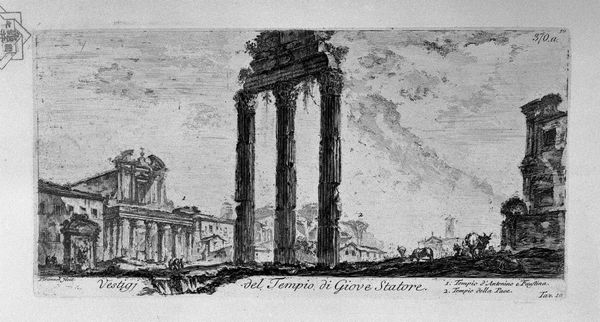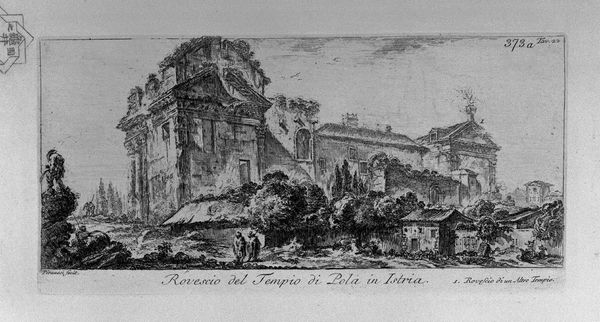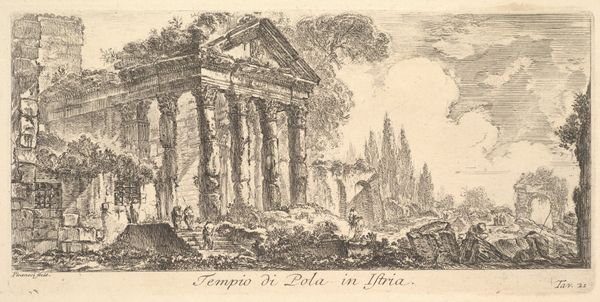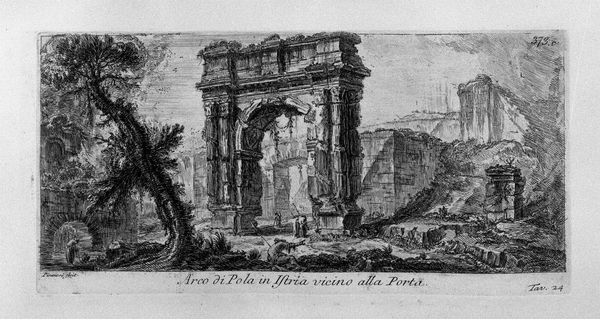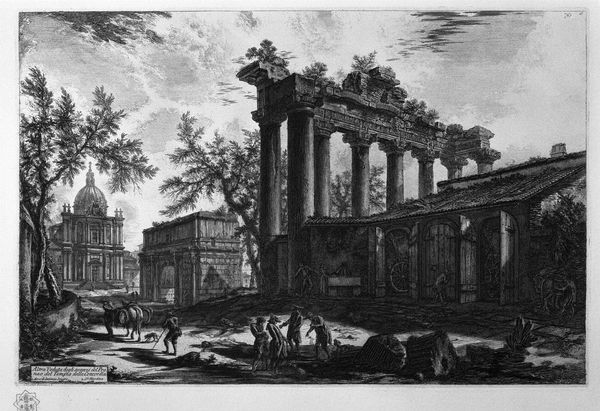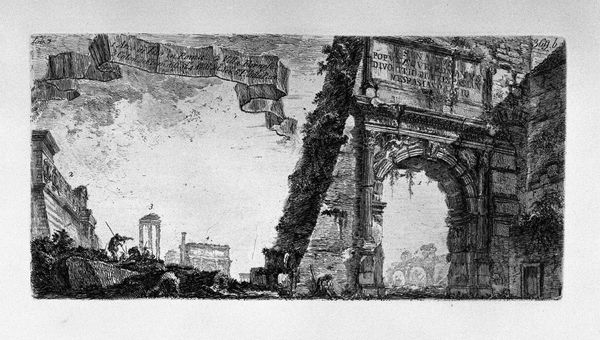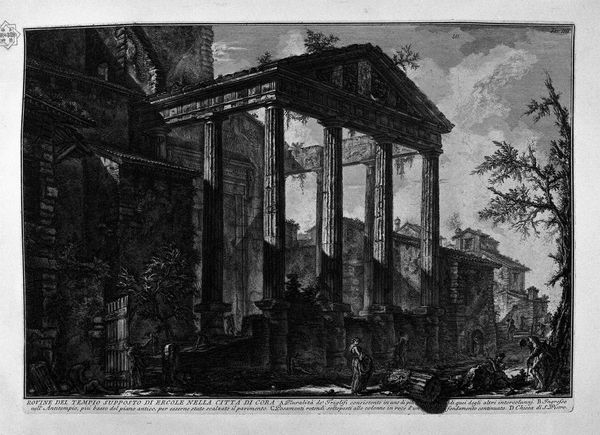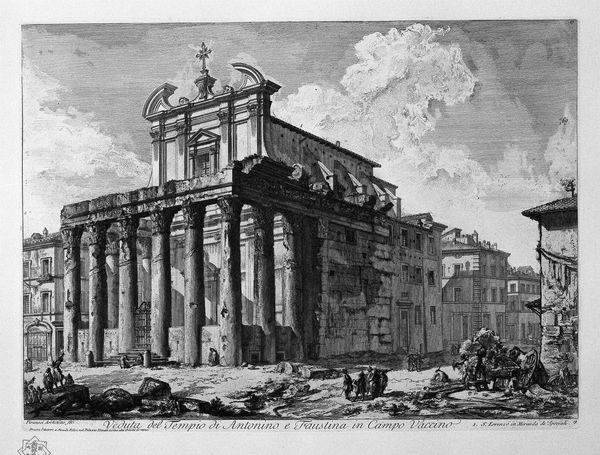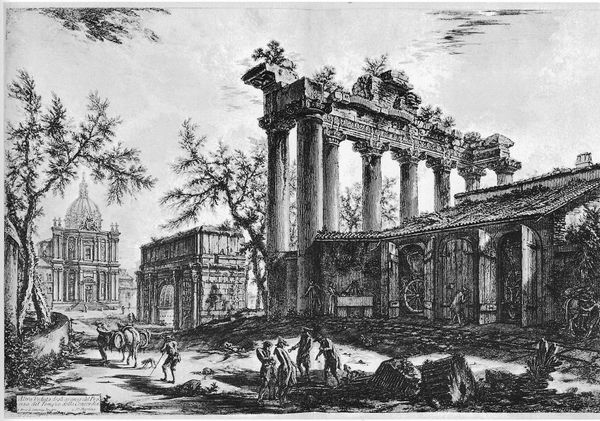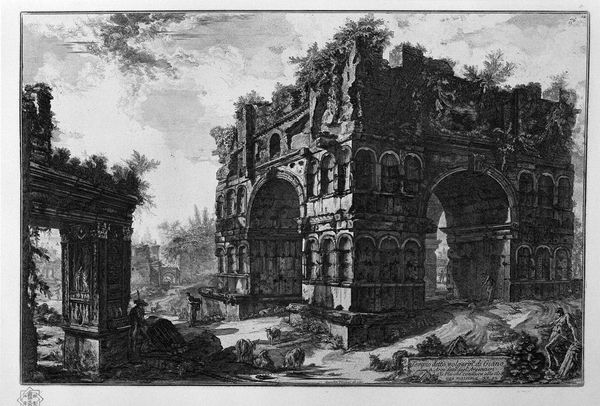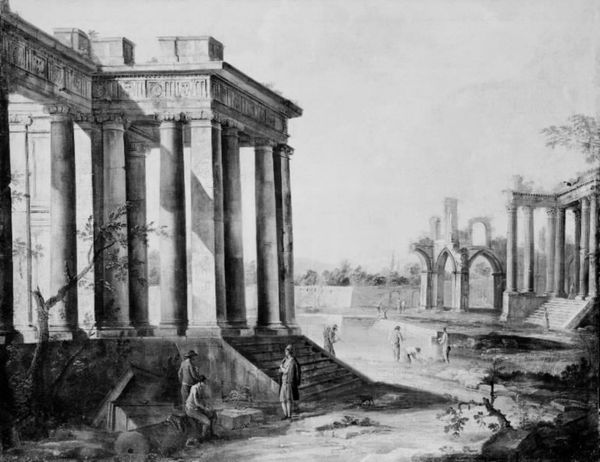
A marble plaque with the inscription: Roman Antiquities outside of Rome, drawn and engraved by Venetian architect Giambattista Piranesi, Part Two 1748
0:00
0:00
Copyright: Public domain
This print, from part two of Giovanni Battista Piranesi’s series on Roman antiquities outside of Rome, captures the Temple of Pola in Istria. Piranesi, working in the 18th century, was deeply influenced by the Grand Tour, a cultural phenomenon where wealthy Europeans, predominantly men, traveled to Italy to immerse themselves in classical art and culture. Piranesi’s identity as a Venetian architect and engraver shaped his perspective. The print is not just a record, but an interpretation, highlighting the grandeur of Roman architecture against the backdrop of a changing world. We see not just the temple, but the encroachment of nature, a dialogue between the decay of the classical world and the passage of time. The figures in the foreground invite us to consider our own place in this narrative, as modern viewers looking back at both the Roman Empire and Piranesi's rendering of it. What does it mean to look back, across the centuries, at these ruins and the world they represent?
Comments
No comments
Be the first to comment and join the conversation on the ultimate creative platform.
